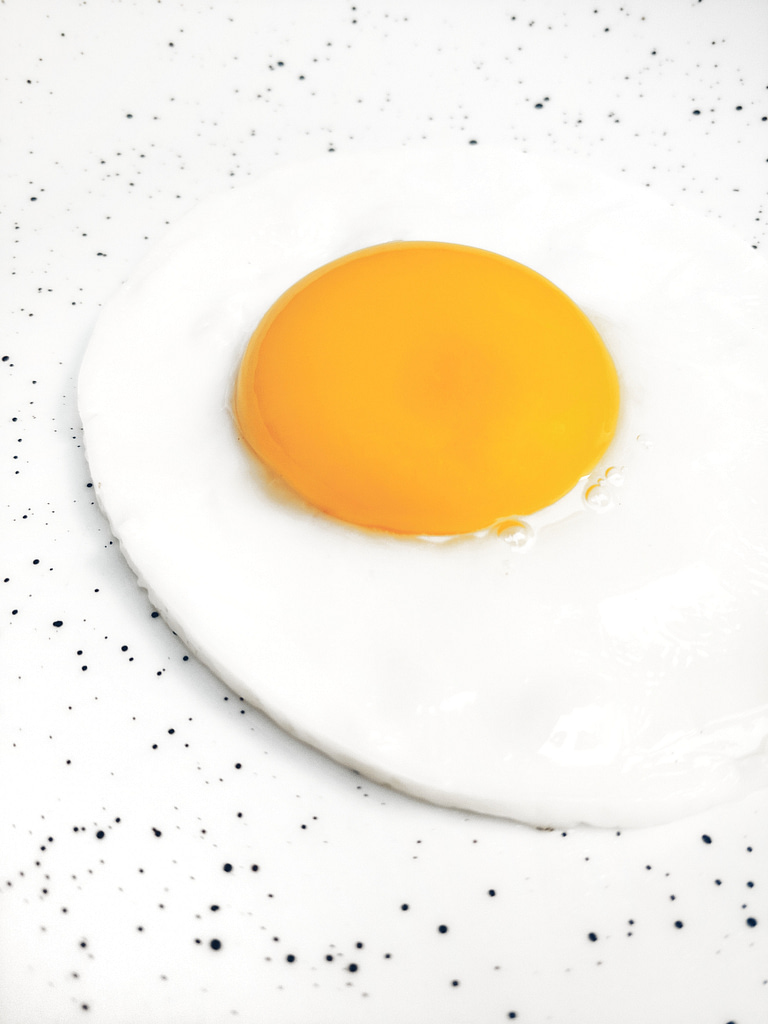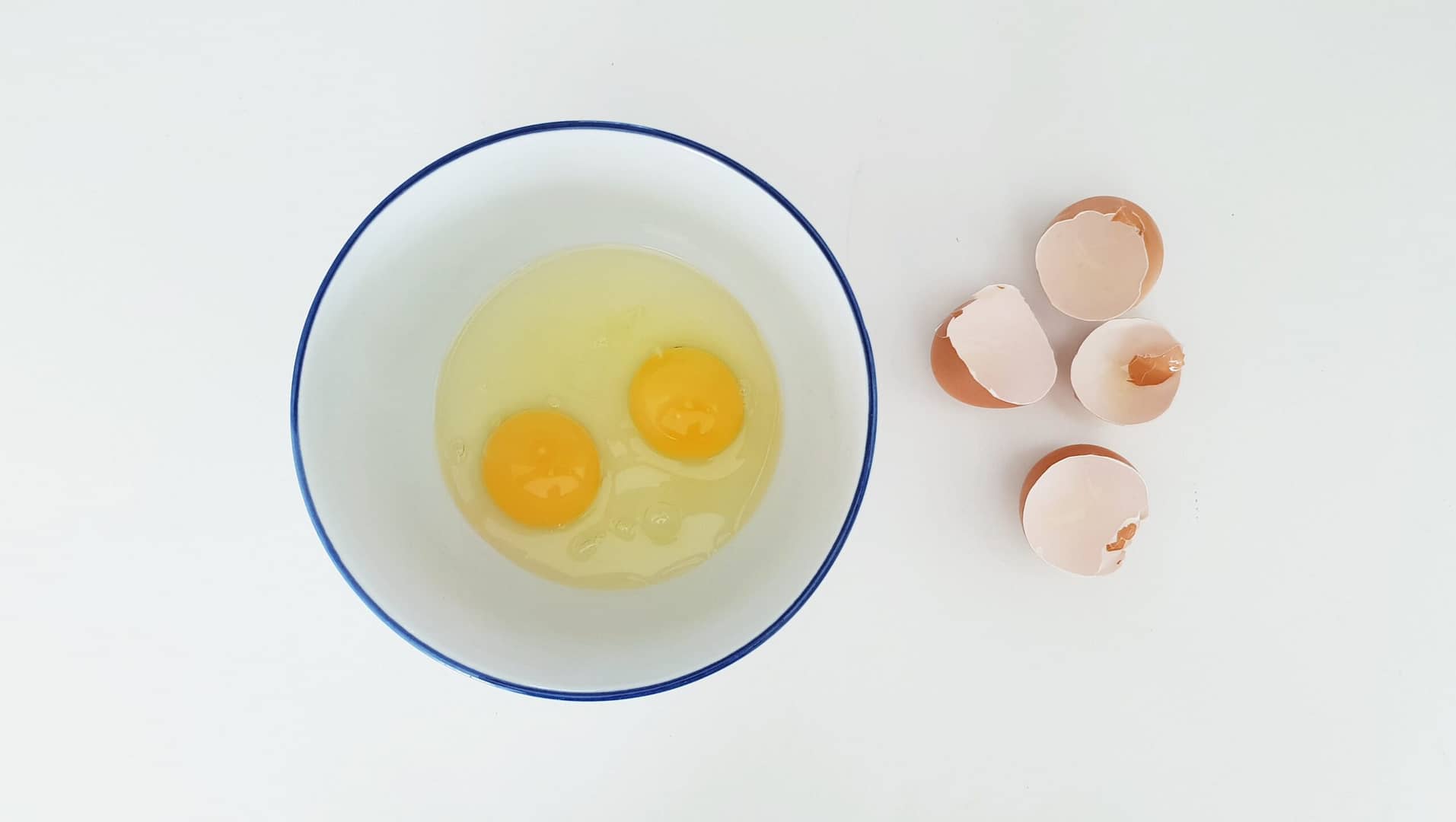When raising chickens it’s important to know how to tell if your eggs are good or bad.
You may have heard the phrase “last one’s a rotten egg” at some point during your childhood… and if you’ve ever actually experienced a rotten egg then you know this is a terrible thing and must be avoided at all costs.
The smell of a rotten egg will rob you of all other senses as your nose lives in agony through the terrifying stench. Even after removing the foul egg from your kitchen, you might still have vivid flashbacks of the assault on your nose.
As such, it’s really quite best to try and avoid rotten eggs whenever possible.
If you’re raising your own chickens and collecting their eggs to eat there may come a time when you’re not sure on the freshness and quality of the egg. It might have been sitting around on your counter or in one of your many eggs baskets for who-knows-how-long. Or it could be a surprise egg your Henrietta laid in a flowerpot which only gets discovered during a watering.
No matter how often or how good you are at collecting your eggs daily and checking around your yard, the fact of the matter is, at some point you’re probably going to question the OK-ness of some of your eggs.

Use these tests, tricks, and best practices to avoid getting a bad egg in your breakfast.
Table of Contents:
What is Considered a Bad Egg
A bad egg is any egg that has been contaminated with bacteria or other foreign substances that make the egg potentially unsafe to eat. This can be due to:
- Surface cracks or other defects letting in bacteria
- The egg aging to the point where the outer shell & inner membrane have deteriorated allowing bacteria to enter
- Development of gas within the egg as the actual egg substances naturally evaporate

[Before Cracking Your Egg]
External Inspection
Check for Cracks & Other Surface Issues
A quick inspection of the outside of the egg should allow you to discover any cracks, holes, or other defects on the outside of the egg.
A cracked egg can lead to bacteria and other foreign entities being inside your egg such as salmonella. If you find a cracked egg that could potentially be contaminated, it’s best to go ahead and toss it – always better safe than sorry.
If you know the egg isn’t very old and the membrane is still intact despite being cracked, then you could go ahead and use it, just make sure to use it that asap and cook it all the way through.
Cracked eggs can also be fed back to your chickens or to your other animals. When feeding to other animals such as dogs or cats the eggs can be provided raw or cooked.
If feeding eggs back to your chickens, it’s best to separate and remove the egg shell so that your chickens don’t develop a habit of going after and eating their own eggs.
Sometimes eggs will have other defects on the outer part of the shell such as unusual color variations (lack of pigment or too much & unusual patterns), calcium deposits (white shell bumps on the egg), blood, speckles, or they might be an off shape. Generally, these eggs are all still good to eat and can be considered fresh. Just make sure to wash off anything nasty such as poop or blood before eating the egg – and again, make sure to cook all the way. Most of these issues are caused by dietary or stress issues and should be addressed individually.
Weird rubbery shell-less eggs – sometimes chickens will lay rubbery eggs (that are bounceable!). Often this is due to a young, immature layer or other issues such as disease. It’s best not to eat these bouncy eggs.
Candling
If you’re in possession of a rooster and there’s a chance your eggs might be fertilized, then you may want to use the candle test before cracking your eggs for breakfast.
While it’s good practice to collect your chickens’ eggs at least once a day, that’s not always possible. There’s also a chance you have a rouge chicken that that likes to lay eggs around your property and make you go search for them like a daily Easter egg hunt.
For reasons such as these, you might find yourself in possession of some eggs of questionable age and contents.
Traditionally, those raising chickens would hold eggs up to a candle to see if they had gone bad or if a chick was growing inside which is where we get the name “candling.” Now-a-days large farming operations might use different equipment and technology to tell. For us everyday folk, a good flashlight will do just fine 😊.
To candle your eggs, find a light source (flashlight, reading light, candle etc) and bring the light and your egg into a dark room. The light source should be fairly bright and should be able to be directed at one area (the egg) and not brighten the entire surroundings – which makes a flashlight ideal.
Hold the egg up to the light and turn the egg left to right and all around inspecting for anything that looks off – such as red veining or a dark pre-fully-formed chick shape.
If you’re using a candle, don’t touch the flame to the egg and burn it. Just hold it near or behind it so that the insides of the egg are illuminated.
If your egg is fresh then it should be mostly dark with a small air cell that’s visible. As eggs age the air cell gets larger as the egg contents evaporate and gas replaces them inside the egg. As you move the egg around you want the contents to not shift or move around a lot (indicating there isn’t a lot of air or gas in the egg and it’s still fresh.
The Float Test
This one you may have heard of. Grandmas and grandpas have been using this method since before they were grandmas and grandpas and it will generally will give you a good idea on the age of an egg.
The science behind this test is that a fresh egg is denser since it’s full of solids and liquids and has a very small air sac in it. This causes it to be heavier and less buoyant and should sink to the bottom of a container full of water.
As an egg ages, the protective bloom around the egg starts to fade. Due to the porous nature of egg shells, the solids inside the egg begin to dehydrate and the liquids begin to evaporate. As the solids and liquids are displaced, they’re replaced by gas and the air sac area of the egg increases in size. This gas accumulation in the egg causes it to become more buoyant and float.
Note though, that just because the egg is floating a bit, does not mean it’s necessarily bad.
To perform the float test:
First, fill a glass or bowl with a couple inches of cold water (doesn’t need to be ice cold, just from the cold side of your sink faucet). You want to have enough water that it will fully cover the egg plus another inch or so (about three inches or so of water). Next gently put your egg into the water and see whether it sinks or floats (don’t go throwing them in there all willy-nilly).
1. If the egg sits on the bottom of the water glass and is on its side
Congratulations! You have yourself a super fresh egg that should be good to eat.
2. If the egg floats just a little bit above the bottom of the glass
After about a week or so an egg will start to internally have signs of aging. There will typically be a little bit of gas forming in the egg which causes it to float slightly. Sometimes the egg will still be at the bottom of the glass, but instead of resting sideways, it’s vertical. Or it might be floating horizontally slightly above the bottom of the glass. These eggs are still fairly fresh and good to eat.
3. If the egg floats about halfway up the glass
If an egg is floating in the middle of the glass but not all the way exposed at the top, then it’s gone a bit stale. Generally, at this point the egg is still ok to eat, but you’ll want to make sure it doesn’t smell bad when you crack it and that you cook it all the way through.
4. If the egg floats all the way to the top of the glass
If the egg floats all the way to the top, then it is most likely bad and should be tossed. Wrap it up in a plastic grocery bag and dispose of in your actual garbage bin. I would not recommend feeding it to your animals or putting it in the compost bin due to the presence of bacteria – and it might give them pretty bad gas.
Remember, if it floats = BAD
[After cracking your egg]
Internal Content Visual Inspection
A good way to check if an egg is good or not is by cracking it in a bowl and inspecting the contents. A fresh egg will hold together well with a bold upright and rounded yolk. If it looks overly runny and the yolk is a bit stretchy then the egg is a bit aged, but should still be good to eat.

The Smell Test
One of the more surer ways to tell if an egg is good or bad is by smell. If the egg smells bad (and you’ll know it if it does), then the egg is rotten and should be tossed. Usually, the presence of bad smells is an indication there’s bad bacteria present.
A rotten egg will often smell bad even before you crack it. After you’ve collected and washed your egg, maybe done a float or candle test, give your egg a good sniff. It there’s a sour or sulfur-like smell it’s a bad egg. At this point, don’t even try cracking it since it’s bound to smell much worse (and why put your nose through that ordeal?).
*Always crack your eggs individually then add to a larger collective bowl. This will allow you to inspect them all before adding them to whatever you’re cooking so you don’t accidentally add a bad egg to a group of good eggs spoiling them.
The Shake Test
While not super accurate, you might be able to tell if an egg is good or not by giving it a shake. Hold it up to your ear and listen for movement inside. If you can hear the contents sloshing around, then there’s too much air/gas inside the egg and it’s no longer good. Keep in mind – this method’s not very accurate. The float and sniff test will give you a better idea.
[If Checking Store-bought Eggs]
Check the Expiration Date
Any eggs bought from a store should be labeled appropriately which typically includes a date of some sort which can be used as a guide to estimate freshness and shelf life.
If there’s a “best by,” “best before,” or “sell by” date on the egg carton.
A “pack date” marks the date the eggs were washed and packaged. If the eggs are within a month or so of the pack date they should still be good. However, it’s good to keep in mind that the eggs may have been collected and sitting around for a while before they were washed and packed. This date is intended as a guide and just because this date has passed doesn’t mean you should go tossing our your eggs.
Eggs bought from a store are usually already a month or so old. Because of this it’s best to use refrigerate them immediately and use within 1 month of purchase.
Keeping Eggs Fresh
1) Collect your chicken’s eggs frequently.
2) Don’t wash them (knocking off debris with a dry paper towel is fine)
3) Store properly – safe place where they can’t be knocked in the floor or accidentally crushed preferably in a cool and dry environment.
4) FIFO – Short for first-in, first out. Make sure you eat the older eggs first.
5) Test for freshness using the methods mentioned in this post.
6) Use other methods for long storage such as water glassing, freezing, etc!
Ending Notes & Other Safety Tips
- Always make sure you fully cook your eggs to kill off any bacteria that may be present. Even if an egg passed all the test there’s still the possibility of bacteria being present. Eggs should generally be cooked to temperatures of between 144 – 160° Fahrenheit per the Egg Safety Center (link here à Cooking eggs to the right temperature – Egg Safety Center). This said… I personally like my eggs a bit runny…
- To make eggs last longer, don’t wash your chicken’s eggs until you’re ready to use them. Eggs contain a “bloom” around them which helps protect the egg from bacteria. Once washed, the bloom is no longer there, and bacteria is more easily able to enter the eggs through the porous shell.
- If you do wash your eggs but aren’t needing to use them right away, make sure you keep them refrigerated.
- If buying eggs from a store or someone else, always make sure the source is trustworthy
-LATEST POSTS-
- Common Diseases & Infections in ChickensDiseases in chickens pose significant challenges to chicken owners and poultry farms worldwide. From viral and bacterial infections to parasitic infestations and fungal diseases, chickens are susceptible to a wide range of health conditions that can cause morbidity, mortality, and …
- Key Traits and Characteristics to Consider when Choosing Your ChickensWhen it comes to selecting chickens for your flock, there are several important characteristics to consider. Whether you’re a seasoned poultry keeper or a novice enthusiast, understanding these traits can help you make informed decisions and build a flock that …
- How to Clean Your Chicks’ Water FountCleaning your chicks’ water founts is something that should be done often. Doing so helps keep clean and sanitary water for your chicks to drink which in turn keeps them healthy and helps prevent illnesses. Step 1: Decide where you’re …
- 10 Essential Tips for Keeping Your Chicks’ Water Clean
 Keeping chicks’ water clean is an important part of raising chicks and managing their health and well-being. Raising baby chicks is both a blessing, as well as a messy curse at times. Cute and lovable, though they are, they’re also …
Keeping chicks’ water clean is an important part of raising chicks and managing their health and well-being. Raising baby chicks is both a blessing, as well as a messy curse at times. Cute and lovable, though they are, they’re also …

